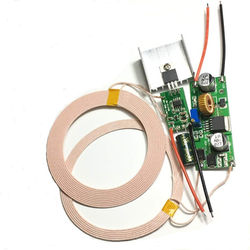The Weightless Bulb
I was inspired to build this project through my fascination with minimalism. I always dreamed of a household with no ugly exposed wires, adaptors or plugs. Upon studying transformers I discovered the wonders of electromagnetic induction. By using Faraday's law of induction we can achieve wireless power. I then realized since I no longer have wires tying me down, why not break the bounds of earth's gravity and create a floating wireless light.
This system uses two separate circuits in order to accomplish this task.
The system archives levitation through giving pulses of power to an electromagnet. The distance from the magnet to the electro-magnet is measured via a linear hall effect sensor. The sensor was placed in between the magnet and electro-magnet. The sensor would then increase or decrease the voltage going to the electromagnet based on demand. The system works in order to keep the object in stable equilibrium.
The second circuit is what transfers power wirelessly to the LED light. This is done by using a primary and secondary coil in order to generate electromagnetic induction. The induction transfers power through a magnetic field from the coil to the coil. This is very similar to how a transformer works.
 Engineering Sketch |  Motherboard |
|---|---|
 Computer Circuit Board Macro |  Circuit Board |
 Electrical engineer working on circuit b |  Circuit Board |
 Electronic Wires |  IMG_5292 |
 IMG_5293 |  wireless power 2 |
 IMG_5291 |  wireless power |